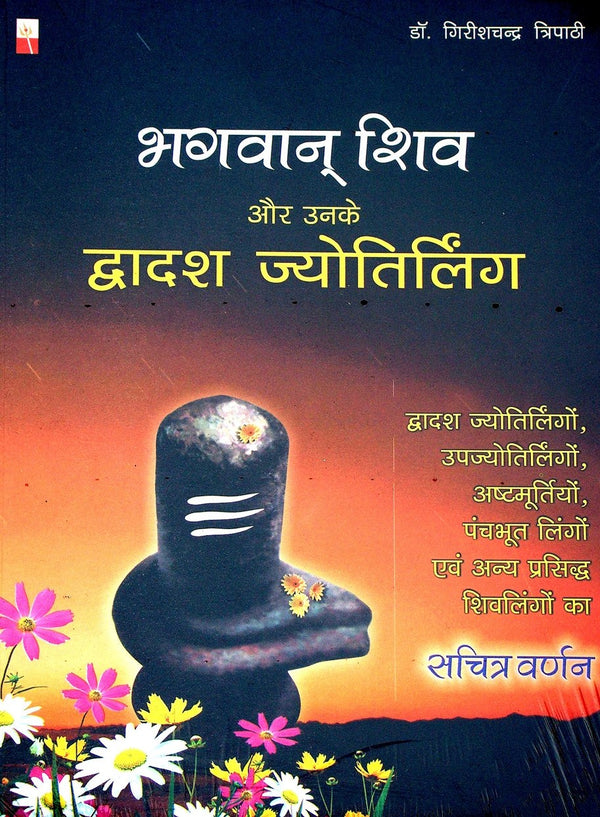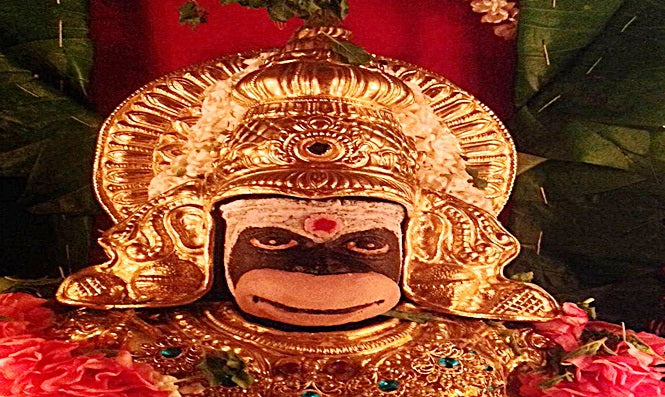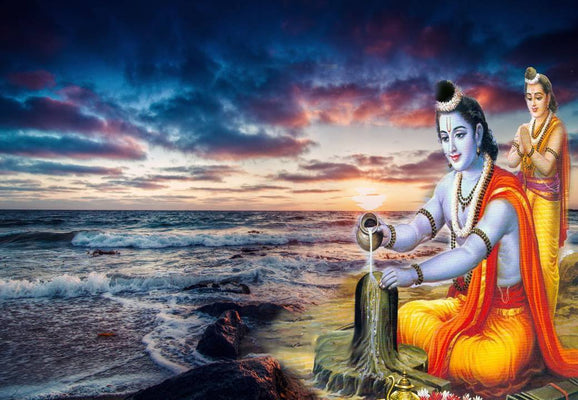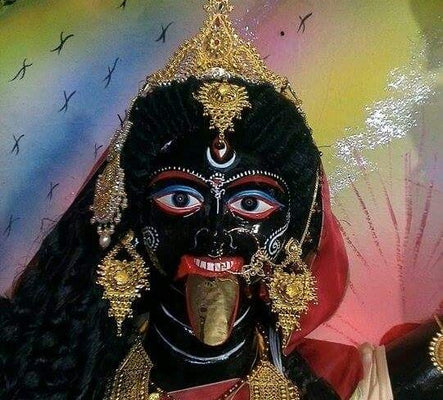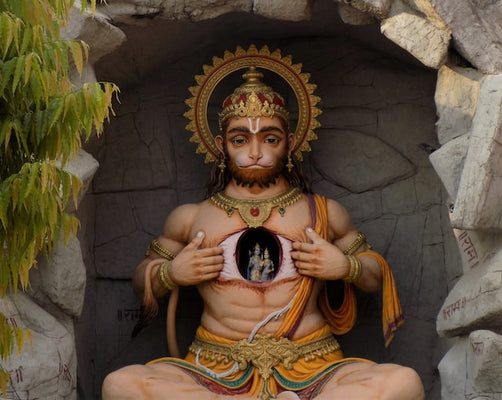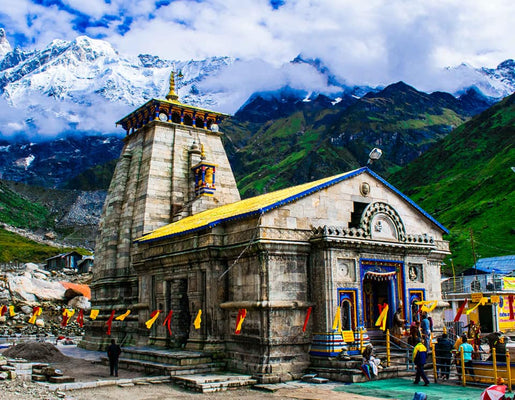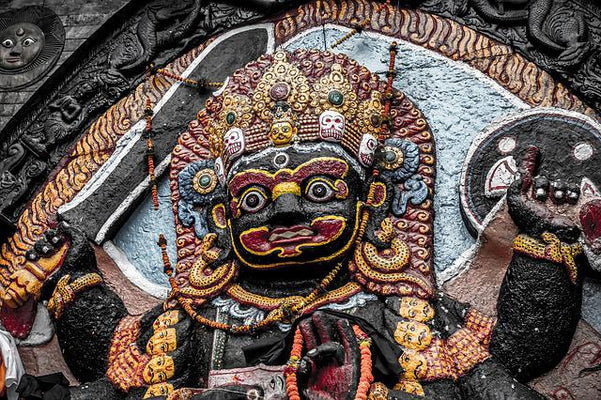Shri Grishneshwar Jyotirlinga
Grishneshwar Jyotirlinga is one of the 12 Jyotirlinga shrines mentioned in the Shiva Purana (kotirudra sahinta, Ch.32-33 referred as "Grishneshwar Jyotirlinga"). Grishneshwar is believed as the Last or 12th (twelfth) Jyotirlinga on the earth. This pilgrimage site is located at a village called Verul which lies at a distance of 11 km from Daulatabad and 30 km from Aurangabad. It lies at a close proximity to the Ellora caves. Being the abode of one of the holiest and ancient temples known by the name of Grishneshwar Jyotirlinga temple, the popularity of Grishneshwar can be ascertained. The village through its serenity and calmness provides just the perfect ambience for all your spiritual enlightenments. Once upon a time the village was ruled by Rani Ahalyabai Holkar and it was she who happened to build the Grishneshwar temple. The temple is also known by several other names like Kusumeswarar, Ghushmeswara, Grushmeswara and Grishneswara.
The Grishneshwar temple has its root in several legendary tales. As the legendary tale goes, a devotee by the name of Kusuma used to offer prayers to Lord Shiva by dipping the Shivalinga in a water tank. When her son was killed by her husband’s first wife out of jealousy, she continued her rituals and one day Lord Shiva appeared before her, answered her prayers by miraculously restoring her son’s life.
The temple stands as an illustration of the pre-historic temple traditions and routines as well as of the pre-historic architectural style and structure. The inscriptions on the temples are a source of much attraction to ardent travellers. The temple is built of red rocks which call for the alluring look that it delivers. The temple is composed of a five tier shikara which account for the attractive look thatit renders. Built in the 18th century the temple is 240 x 185 feet tall and cubicle in shape. It exemplifies the medieval architecture in all its opulence. There are beautiful carvings and attractive sculptures of many Indian Gods and Goddess. Holy water is known to flow inside the temple and this is where the mystery lies.
Festivals
The festival of Mahashivaratri is celebrated with great pomp and show, its being the main festival here. Thousands of devotees are seen flocking the temple during this festival. The village of Grishneshwar is extremely small and people mainly visit the temple which is the major attraction of the place. Maha Shivaratri festival is celebrated in February/March. In September Vinayaka Chathurthi is celebrated. Navaratri and Deepavali are celebrated in October/November with a lot of enthusiasm.
One can visit the Ajanta and Ellora caves that are located at a close proximity to Grishneshwar. Grishneshwar is easily accessible and can be reached via road in private taxi or government buses. It is an ideal place for a weekend trip. However, it is on the festival of Maha Shivratri that the small town comes alive. The place is then visited by a large number of devotees from far and near.
Legends
Legend has it that a devout woman Kusuma offered worship to Shiva regularly by immersing a Shivalingam in a tank, as a part of her daily ritual worship. Her husbands first wife, envious of her piety and standing in society murdered Kusumas son in cold blood. An aggrieved Kusuma continued her ritual worship, and when she immersed the Shivalingam again in the tank, her son was miraculously restored to life. Shiva is said to have appeared in front of her and the villagers, and then on is believed to have been worshipped in the form of a Jyotirlinga Ghusmeshwar.
According to Shivapuran, in the southern direction, on a mountain named Devagiri lived a Brahmin called Brahmavetta Sudharm along with his wife Sudeha. The couple did not have a child because of which Sudeha was sad. Sudeha prayed and tried all possible remedies but in vain. Frustrated of being childless, Sudeha got her sister Ghushma married to her husband. On the advice of her sister, Ghushma used to make 101 lingas, worship them and discharge them in the near by lake.
With the blessings of Lord Shiva, Ghushma gave birth to a baby boy. Because of this, Ghushma became proud and Sudeha started feeling jealous towards her sister. Out of jealously, one night she killed Ghushma's son and threw him in the lake where Ghushma used to discharge the lingas.
Next morning, Ghushmas and Sudharm got involved in daily prayers and ablutions. Sudeha too, got up and started performing her daily choirs. Ghushma's daughter-in-law, however, saw stains of blood on her husband's bed and parts of the body drenched in blood. Horrified, she narrated everything to mother-in-law Ghushma who was absorbed in worshipping Shiva. Ghushma did not deter. Even her husband Sudharma did not move an inch. Even when Ghushma saw the bed drenched in blood she did not break down and said he who has given me this child shall protect him and started reciting ‘Shiva-Shiva'. Later, when she went to discharge the Shivalingas after prayers she saw her son coming. Seeing her son Ghushma was neither happy nor sad. At that time Lord Shiv appeared before her and said - I am pleased with your devotion. Your sister had killed your son. Ghushma told Lord to forgive Sudeh and emancipate her. Pleased with her generosity, Lord Shiva asked her another boon. Ghushma said that if he was really happy with her devotion then he should reside here eternally for the benefit of the multitudes in form of a Jyotirling and may you be known by my name. On her request, Lord Shiva manifested himself in the form of a Jyotirling and assumed the name Ghushmeshwar and the lake was named as Shivalaya thereafter.
Another legend says - Once the king went hunting. While hunting, the king killed the animals living with the Rishis and munis too. Seeing this, the irate Saints cursed the king, as a result of which, his entire body was infested with insects. Now, smitten by this curse, the king began to wander in the forest. His throat was parched because he was very thirsty. There was, alas, no water to be found anywhere. At last he found a water hole made by the hooves of a horse. Just as the king started to drink water a miracle occurred. The king's body was rid of all the insects. The king did severe penance (Tapa) there. Lord Brahma was pleased and appeared before him and installed Parashta Teerth there. He also created a huge and holy lake near by.
This Brahma sarovar later came to be known as Shivalay.
There is a story about Shivalay also - Once Shiva and Parvati were playing chess on Mount Kailasa. Paravti checkmated Shiva. Shankara played to be angry at this and went away southward. He went and stayed at a place on the Sahyadri range, where there is cool breeze. This place was given the name of Maheshamauli Bhainsmal. Parvati came there looking for Shankar. She won the heart of Shiva in the form of a hill mountain tribal girl. They both spent some time there happily.
This forest came to be known as Kamyakavana. Lord Mahesha forbade crows from entering the area of Maheshamouli or Bhainsmal. One day, Paravti was very thirsty. Shankara pierced earth with his trident and got the water of Bhogavati from the Patal (Nether world). This is the Shivalay.
The Shivalay expands a little ahead where Shivanadi (Shivanand) meets it and a little more further, Yelaganga also flows just near it. When Shiva and Parvati were staying here pleasently, a hunter by the name Sudhanwa came there looking for a prey. A miracle happened and Sudhanwa turned into a woman. At this he did a severe Tapa there. Shankara was pleased and appeared. Actually, Sudhanwa was a woman by birth in his previous life. Thus, Shankara from that very curse of becoming a woman turned Sudhanwa into Yelaganga river. Thus, Punya Sarita Yelaganga was born in the Kamyawana. Later, it was to become the bathing place called Dhara Teerth or ‘Sita's Snangriha' and flow from a higher place and goes through Verul village.
Once Parvati, was about to fill her hair parting with vermillion and saffron, in Kamyavana. She kept them in her left palm and mixed the water of Shivalay in it. With the right thumb she started mixing them both. Then a miracle occurred, vermillion turned into a ShivaLinga and a great light appeared in it. Parvati was awe struck at this. Then Lord Shankara said: "This Linga was hidden in the Patala." And removed it with his trident.
Then a bubble emerged from the earth with water (Kashikhand).
Parvati kept that glorious light in stone Linga and installed it there. This Purna (complete) JyotirLinga is called Kunkumeshwar. But since Dakshayani created this Linga with the function of her thumb. She gave it the name of Grishneshwara (Grishna means friction).
On the southern mountain called Deva Parvata, a great scholar Brahmin Sudhama of Bharadwaja gotra, used to live with his beautiful, devout wife called Sudeha. They had no children. They were very unhappy because of this. They were harassed and tortured by the sly remarks of their neighbours. But Sudhama, an intelligent person, did not care about these. One day, Sudeha threatened to commit suicide and sister Dushma, married her husband. Both of them promised that there would be no jealousy between them. After sometime, Dushma gave birth to a son. And eventually even that son married. Both Sudhama and Dushma, were nice to Sudeha. But jealousy did get the better of Sudeha. Once she picked up Dushma's son who was sleeping by her side and killed him. She threw the body into the lake near by.
In the morning there was a big hue and cry. Dushma's grief knew no bounds. Even then, she went to the river to do her routine worship. She made her usual hundred Lingas and began worship she saw her son standing near the lake. Shiva was pleased with her worship and revealed the truth about Sudhas forgiveness of Sudha's sin. She indeed requested Shiva to remain there itself for the welfare of the humanity.
Shiva acceded to her request and remained there with the name of Dhushamesha.
History
The very devout Shiva devotee, Bhosale (The Patel or chief of Verul) once found a treasure hidden in the snake pit (ant hill) by the grace of Lord Grishneshwar. He spent that money to renovate the temple and built a lake in Shikharshinganapur. Later on, Goutamibal (Bayajabai) and Ahilyadevi Holkar renovated the Grishneshwar temple. This 240 ft x 185 ft temple is still there strong and beautiful as ever. Halfway up the temple, Dashavataras are carved in red stone. These are beautiful to look at. There are also other beautiful statutes carved out. A court hall is built on 24 pillars. On these pillars there are wonderful carvings. The scenes and paintings are beautiful. The Garbhagriha measures 17ft x 17 ft. The Lingamurty faces eastward. There is a gorgeous Nandikeshwara in the court hall. Ghrishneshwar Temple is a very revered temple, situated in the state of Maharashtra. It lies very near to the Buddhist caves of Ellora, only half a kilometer away, and serves as the abode of one of the 12 Jyotirlingas in India dedicated to Lord Shiva. Even the Ajanta Caves and Dulatabad town of Maharashtra are situated nearby. The temple, with exquisitely sculpted walls, was built under the patronage of Queen Ahilyabai Holkar, one of the rulers of the erstwhile state of Indore
Architecture
Fine architecture and great artistry of stone carvers characterize this impressive structure. The Shivlinga resides inside the inner chamber of the temple. Outside this chamber a large statue of Nandi is present. Covering Nandi is the Sabha Mandap of the temple. It occupies the major portion of the temple and offers seats made from stone. Various tales can be seen carved on the pillars of the Sabha Mandap. These carvings feature fine details and notable artistic ability. The exterior walls of the temple are full of various carvings.
Several mythological tales are carved here. Amongst these the statues showing ten incarnations of Lord Vishnu stand out. The conical top of the temple, which was probably built later, also has carvings with fine details. The figures here are masterfully carved and possess very expressive gestures. The temple has a gilded crest made of copper. Resting inside a square shaped ground, having pavement and a surrounding stonewall, and the Ghrishneshwar temple is a fine example of ancient building work.
Ghrishneshwar Temple Timings
Temple Timings Open 5.30 am - 9.30 pm
During Shravan (Aug-Sep): 3 am - 11 pm
Places of interest near by
The famous Ajanta and Elora caves are the famous tourist spots nearby the temple. One may visit Aurangabad Caves, Bibi - Ka – Maqbara, Pan Chakki, Daulatabad, Khuldabad, Pithalkora, Paithan, Bani Begum Garden.
Getting there and around
By Air - Nearest airport is Aurangabad.
By Rail - Aurangabad is directly connected by rail with Bombay, Manmad, Nasik Road, Kalyan, Secunderabad (Hyderabad) and with other cities via Manmad.
By Road - Aurangabad is well connected by good motorable road with Ajanta 106 kms, Bombay 392 kms, Ellora 30 kms, Nanded 272 kms, Nasik 221 kms, Pune 229 kms Shirdi 136 kms and other important cities.


